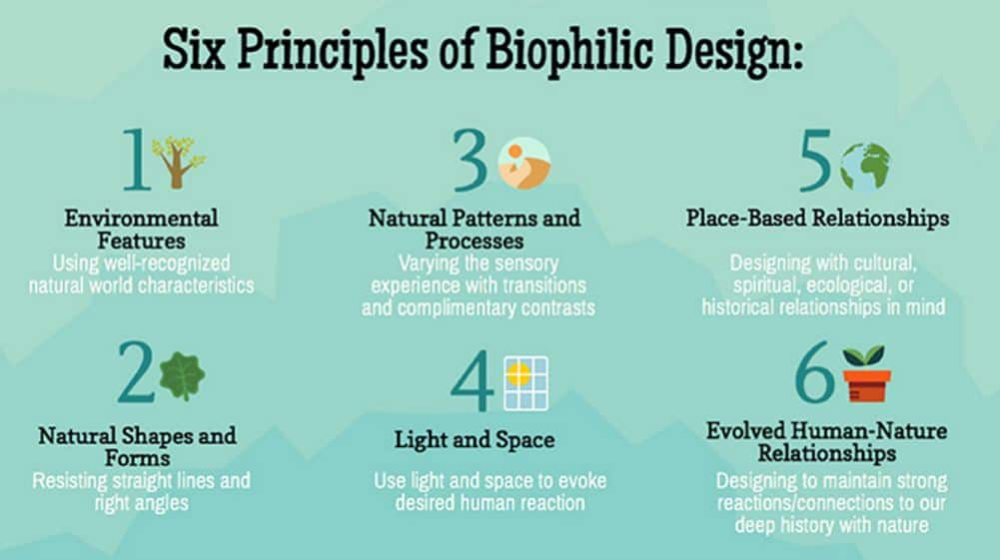How Does Architecture Incorporate Principles Of Biophilic Design In Workplace Environments?

In recent years, biophilic design has been gaining popularity in office fit out and design. Biophilia refers to humans' innate affinity towards nature and natural elements. Biophilic design seeks to incorporate natural elements into indoor spaces, such as plants, natural light, and water features, to promote wellness, productivity, and creativity.
Benefits of Biophilic Design in Offices
1. Improved Air Quality
Plants are natural air purifiers, filtering out pollutants and harmful chemicals from the air. Incorporating plants into office spaces can improve air quality and create a healthier work environment for employees.
2. Increased Productivity
Studies have shown that exposure to nature can enhance creativity, reduce stress, and improve cognitive function. Biophilic design elements, such as natural light and views of nature, can improve productivity and employee satisfaction.
3. Stress Reduction
High-stress levels can lead to burnout and decreased job satisfaction. Biophilic design elements, such as natural light and greenery, have been shown to reduce stress levels and improve overall well-being in the workplace.
4. Enhanced Creativity
Nature has been shown to enhance creativity and problem-solving abilities. Incorporating biophilic design elements, such as natural light and water features, into office spaces can stimulate creativity and innovation among employees.
5. Increased Sustainability
Biophilic design promotes sustainability by incorporating natural elements into indoor spaces and reducing energy consumption. Elements such as green walls and passive solar design can reduce energy consumption and promote sustainable practices.
Implementing Biophilic Design in Offices
1. Incorporate Plants
Plants are the most commonly used biophilic design element in offices. Incorporating plants into office spaces can improve air quality, reduce stress levels, and enhance creativity and productivity.
2. Use Natural Lighting
Natural light is an essential element of biophilic design. Exposure to natural light has been shown to improve mood, regulate sleep patterns, and enhance productivity. Incorporating natural light into office spaces can have significant benefits for employees.
3. Provide Views of Nature
Viewing nature has been shown to reduce stress levels and improve overall well-being. Providing views of nature, such as through windows or natural artwork, can enhance the biophilic design of an office space.
4. Incorporate Water Features
Water features, such as fountains or indoor waterfalls, can enhance the biophilic design of an office space and promote feelings of calm and relaxation. However, it is important to ensure that water features do not increase humidity levels in the office space, which can cause discomfort for employees.
5. Use Natural Materials
Using natural materials, such as wood and stone, can enhance the biophilic design of an office space and promote sustainability. Natural materials can also provide a sense of connection to nature and improve overall well-being.
FAQ
Q: What is biophilic design?
A: Biophilic design seeks to incorporate natural elements into indoor spaces to promote wellness, productivity, and creativity.
Q: What are the benefits of biophilic design in offices?
A: Biophilic design can improve air quality, increase productivity, reduce stress levels, enhance creativity, and promote sustainability in office spaces.
Q: How can biophilic design be implemented in offices?
A: Biophilic design can be implemented in offices through the incorporation of plants, natural lighting, views of nature, water features, and natural materials.
Q: Are there any downsides to incorporating biophilic design in offices?
A: It is important to ensure that biophilic design elements, such as water features, do not increase humidity levels in the office space, which can cause discomfort for employees.
Q: What are some examples of biophilic design in offices?
A: Examples of biophilic design in offices include green walls, living plant walls, natural light, views of nature, water features, and the use of natural materials.
Q: Why is biophilic design important in offices?
A: Biophilic design can enhance the well-being, productivity, and creativity of employees, as well as promote sustainability in office spaces.
Conclusion
Biophilic design is a growing trend in office fit out and design, and for good reason. Incorporating natural elements into indoor spaces can improve air quality, increase productivity, reduce stress levels, enhance creativity, and promote sustainability. By incorporating biophilic design elements into office spaces, employers can create a healthier, more productive, and sustainable workplace for employees.




Post a Comment for "How Does Architecture Incorporate Principles Of Biophilic Design In Workplace Environments?"